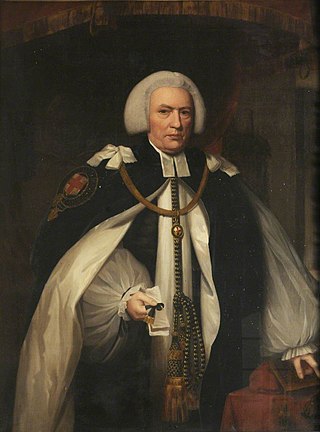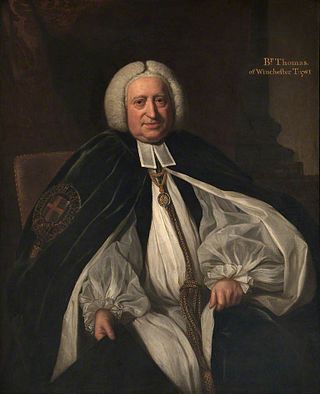
The Most Noble Order of the Garter is an order of chivalry founded by Edward III of England in 1348. The most senior order of knighthood in the British honours system, it is outranked in precedence only by the decorations of the Victoria Cross and the George Cross. The Order of the Garter is dedicated to the image and arms of Saint George, England's patron saint.

Shute Barrington was an English churchman, Bishop of Llandaff in Wales, as well as Bishop of Salisbury and Bishop of Durham in England.

John Douglas was a Scottish scholar and Anglican bishop.

William Paget, 1st Baron Paget of Beaudesert, was an English statesman and accountant who held prominent positions in the service of Henry VIII, Edward VI and Mary I.
The Royal Almonry is a small office within the Royal Households of the United Kingdom, headed by the Lord High Almoner, an office dating from 1103. The almoner is responsible for distributing alms to the poor.
The College of Chaplains of the Ecclesiastical Household of the Sovereign of the United Kingdom is under the Clerk of the Closet, an office dating from 1437. It is normally held by a diocesan bishop, who may, however, remain in office after leaving his see. The current Clerk is Richard Jackson, Bishop of Hereford.

John Gilbert was Archbishop of York from 1757 to 1761.

The Honourable Richard Bagot was an English bishop.

Richard Beauchamp was a medieval Bishop of Hereford and Bishop of Salisbury.
James Goldwell was a medieval Dean of Salisbury and Bishop of Norwich.
Francis Mallet was an English churchman and academic, and chaplain to Mary Tudor.

John Thomas was an English bishop.

John Fisher was a Church of England bishop, serving as Bishop of Exeter, then Bishop of Salisbury.

St George's Chapel at Windsor Castle in England is a castle chapel built in the late-medieval Perpendicular Gothic style. It is a Royal Peculiar, and the Chapel of the Order of the Garter. St George's Chapel was founded in the 14th century by King Edward III and extensively enlarged in the late 15th century. It is located in the Lower Ward of the castle.
Thomas Manningham (1651?-1722) was an English churchman, bishop of Chichester from 1709.











